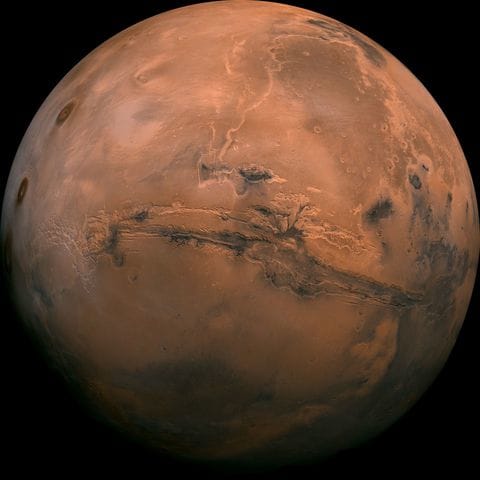Speaking of Science 'A fantastic find': Mars hides thick sheets of ice just below the surface
The incline ascends as high as London's Big Ben tower. Underneath its rosy layer of soil is a sheet of ice 300 feet thick that gives the scene a blue-dark shade. On the off chance that such a scene sounds powerful, it is. To visit it, you'll need to movement to Mars.
Planetary researchers found eight of these geographical highlights, called scarps, on the Red Planet. An investigation of the scarps uncovered that thick ice covers up just underneath the surface. This ice, the specialists say, could be an enticing focus for future investigation — and in addition an important asset for Earthlings stayed outdoors on Mars.
"We've discovered another window into the ice for think about, which we expectation will hold any importance with those inspired by all parts of ice on Mars and its history," said Colin Dundas, an individual from the U.S. Geographical Survey's Astrogeology Science Center in Arizona and a creator of a report distributed Thursday in the diary Science.
It isn't news that Mars is cold. In 2001, the Mars Odyssey shuttle touched base at the planet and started snooping for concoction marks of ice. The art's gamma-beam spectrometer discovered obvious hydrogen, which demonstrated Mars had gigantic measures of ice. As much as 33% of the Martian surface contains shallow ice. In any case, remotely detecting components, for example, hydrogen couldn't uncover the profundity and cosmetics of the ice.
The more current Mars Reconnaissance Orbiter mapped the surface in more prominent detail. Dundas and his partners utilized its photos to find uncovered ice in little cavities, icy masses and ice sheets. "The high-determination information has significantly enhanced our comprehension of different ice-related land frames," he said.
These bluffs are "uncommon looks into the subsurface of Mars, giving us access to an undisturbed cut through Mars' ice in the mid-scopes — an awesome find!" said Susan Conway, a planetary researcher at the University of Nantes in France who was not included with this examination.
Open University's Matt Balme, a planetary researcher in Britain who did not take part in this examination, said the key discoveries were the shading pictures of a pale blue tint. That shows a sub-layer that is "some way or another compositionally extraordinary" than the red earth. It is improbable that the solidified sheets are a blend of water and soil. "On the off chance that the finishes of the paper are right," he stated, "you're taking a gander at something that is relatively unadulterated ice."
The scarps exist along the planet's center scopes, deciding out icy masses that moved from the posts. The examination creators recommend that these ice sheets framed when thick snows covered Mars. Balme concurred that snowfall likely made the ice over a time of a couple of thousand years.
"We thought about how conceivable it is that we were seeing surface ice," Dundas stated, "however the ice marks continue through the late spring." The covered ice uncovered itself after the structures ended up plainly unsteady and extended. Those bluffs framed through a procedure called sublimation, in which uncovered ice transformed specifically into water vapor. Stones and clean that refreshed on the ice all of a sudden had their establishment vanish into the climate.
These inclines are surprisingly steep, Balme stated, however he envisions that the scarps appear to be like frosty moraines on Earth.
The sheets' nearness to the surface makes them open, in principle, to robot voyagers. "This subsurface ice could contain important records of the Martian atmosphere, much the same as the Greenland and Antarctic ice centers," Conway said. In August, geochemists got 2.7-million-year-old ice tests from Antarctica — the most seasoned ever — and they intend to contemplate air bubbles caught inside them to find out about Earth's ancient environment.
Furthermore, fragile living creature and-blood adventurers may profit, as well (however the center scopes of Mars give off an impression of being colder, less inviting landscape than districts nearer to the equator). "If we somehow managed to send people to live on Mars for a significant timeframe, it would be a phenomenal wellspring of water," Balme said. Space travelers living in the pits would have a fundamental crude material adjacent. Every one of the a parched space traveler would need to do is run at the scarp with a sledge and, presto, crisp Martian ice chips.